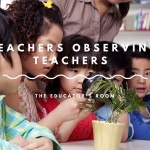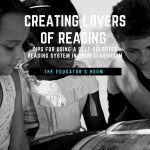Educators regularly refurbish old ideas with new wrappings. Take for example, the literature circle. The literature circle has been in education since 1982 when, according to Wikipedia, fifth grade students in Karen Smith’s class, organized themselves loosely into groups, and started to discuss individual novels.
Smith was surprised at the degree of their engagement with the books and the complexity of their discussions, they had no outside help or instruction from their teacher (Daniels, 1994). From here literature circles evolved into reading, study and discussion groups based around different groupings of students reading a variety of different novels.
In contrast to the classroom where a whole class novel is taught by the teacher, literature circles have provided students the chance to participate in self-directed discussions in by taking on different roles and responsibilities.
I am a big fan of literature circles as a way to encourage critical thinking, student choice, and independence in students. I have been promoting the incorporation of literature circles at multiple grade levels. Most recently, several of the 7th and 8th grade classes in my district have been using the literature circles in their new block schedule with some success. The teachers in these classes began by using the traditional roles for students: discussion director, connector, illustrator, vocabulary enricher, text locator, and researcher. The transition was smooth since students were already familiar with these roles from literature circles in elementary school.
Last month, I began offering teachers suggestions on how to offer some “new wrappings” for these old roles. Using a list of writing genres, I suggested that the teachers could offer roles for students in the literature circles and also include authentic writing prompts.
In these new wrappings, each student’s role could center on one of the following writing genres:
Write a Personal Letter from one character to another;
Prepare a Greeting Card to or from a character;
Develop a Things to Do List for a character;
Write Classified or Personal Ads that connect to a chapter;
Prepare a mix tape for a character and explain the choices;
Draft a resume for a character;
Compose a TV script from a chapter with notes for stage directions;
Script a Talk Show Interview or Panel with characters;
Record a recipe that is associated with the book;
Organize an Infographic using facts from the story;
Create and organize Receipts, Applications, Deeds, Budgets from the story
Obituary, Eulogy or Tribute for a character
These roles could rotate the way the traditional roles rotate in a literature circle, or the roles could be added as special collaborative writing activities.
I also encouraged teachers to number the seats in the literature circles, and then assign roles based on the number of the seat a student selected. Another strategy would be to offer a “surprise” role that rotates to a different numbered chair every meeting.
Like so much in education, old strategies can be made new.





